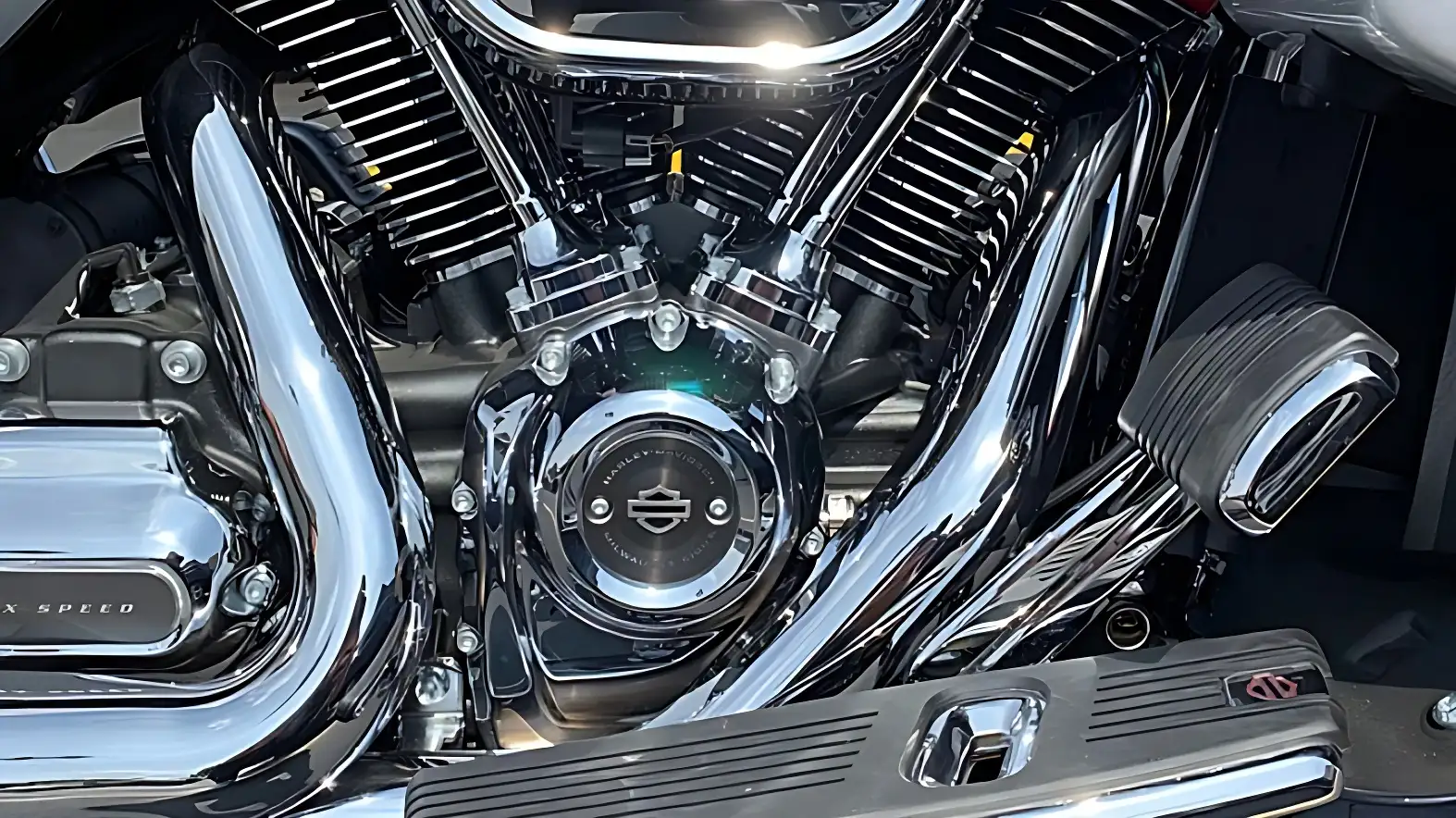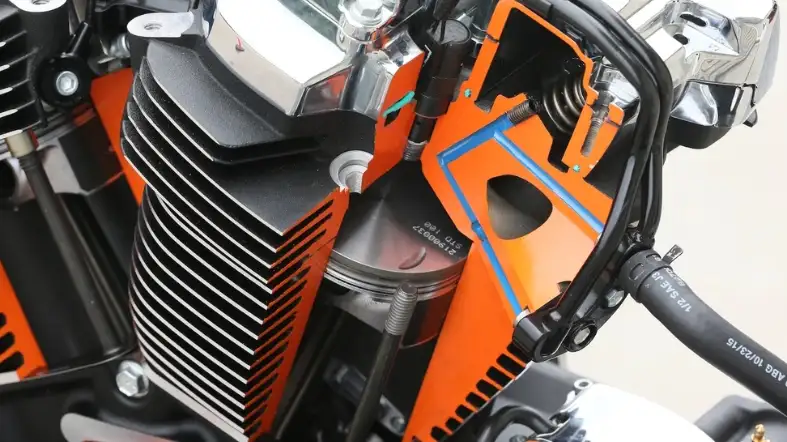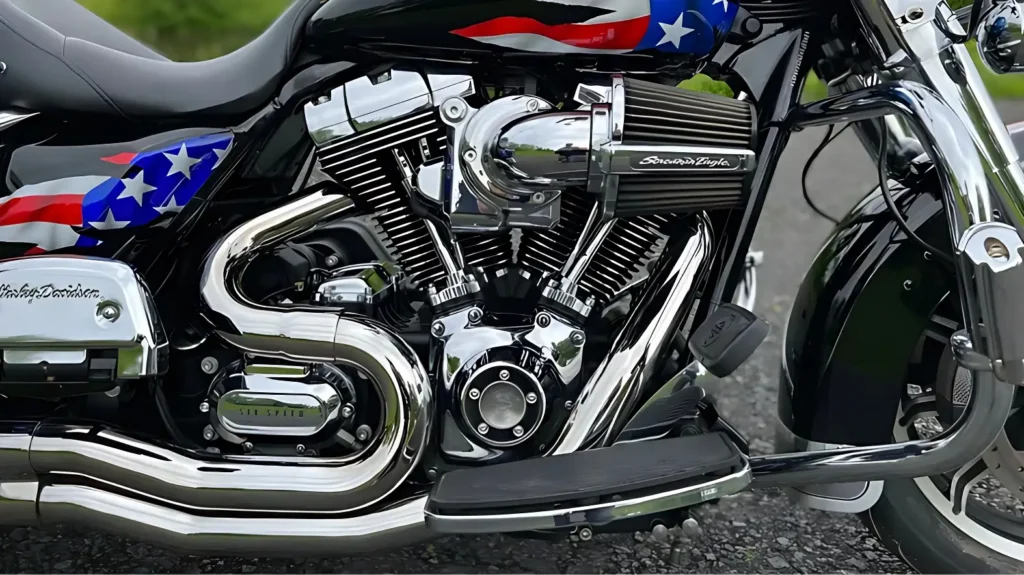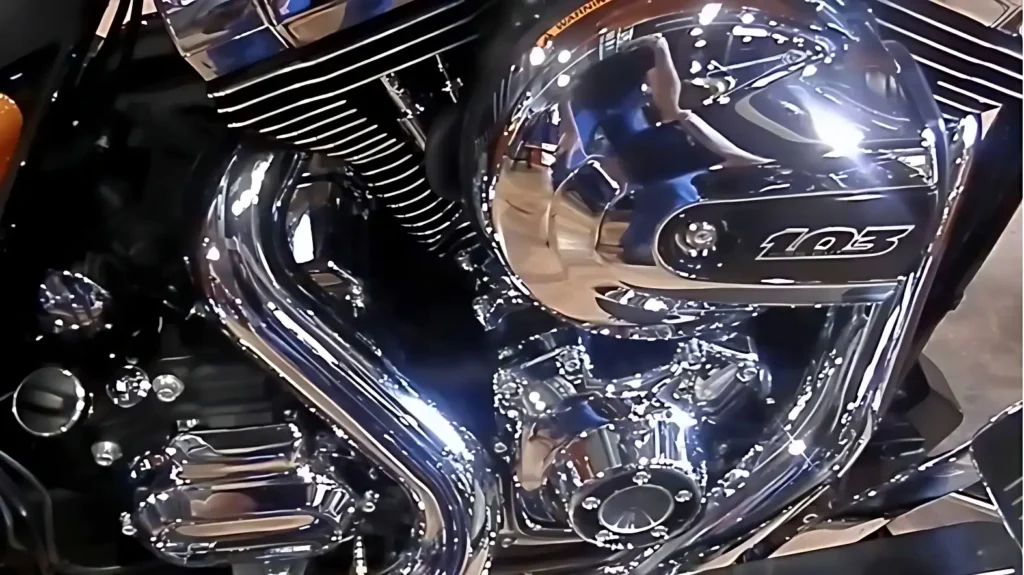The actual horsepower of a Harley-Davidson 103 engine can vary depending on factors like the specific model, modifications, and other conditions like altitude and temperature.
Despite this, the 103 engine is generally regarded as quite powerful, offering plenty of oomph for cruising on the highway or cruising through city streets.
In this blog, we’ll explore the horsepower ratings of the Harley-Davidson 103 engine and other important details about this iconic engine.

How Much HP Does A 103 Harley Have?
Depending on the specific model of Harley-Davidson bike that the 103 engine is featured in, the horsepower can range from around 70 to 100 horsepower.
Here’s a table showcasing the average horsepower ratings for Harley-Davidson 103 engines over the years:
| Year | Harley-Davidson Model | Horsepower Rating |
|---|---|---|
| 2002 | Dyna Wide Glide | 74.7 |
| 2006 | Softail Deluxe | 79.3 |
| 2010 | Road King Classic | 77.7 |
| 2014 | Street Glide Special | 76.9 |
| 2018 | Fat Boy | 77.5 |
How to Measured Horsepower in a Harley-Davidson 103 Engine?
Here are the steps for measuring horsepower in a Harley-Davidson 103 engine.
Step 1: Understand the Basics of Horsepower
A horsepower is a unit of power that measures how much work an engine can do over a specific period.
One horsepower equals 746 watts or 33,000 foot pounds per minute. It is the amount of energy an engine can produce in one minute.
Step 2: Determine the Engine’s Baseline Horsepower
Before measuring horsepower, you need to determine the engine’s baseline horsepower.
The baseline horsepower is the amount of horsepower the engine produces without any modifications or changes.
You can determine this value by consulting the owner’s manual or by running the bike on a dynamometer.
Step 3: Install a Dyno
A dynamometer or dyno is a device used to measure the horsepower and torque output of an engine.
You will need to install a dyno in your garage or workshop to measure the Harley-Davidson 103 engine’s horsepower.
Dynos are available in various types and sizes, so you’ll need to choose one that is appropriate for your needs.
Step 4: Run the Bike on the Dyno
Once you have installed the dyno, you need to run the bike on it. Follow the manufacturer’s instructions for setting up and operating the dyno.
Make sure you use the correct settings and follow all safety procedures. Run the bike for a few minutes to ensure that the engine is warm and running at its optimal level.
Step 5: Record the Horsepower Reading
While the bike is running on the dyno, record the horsepower reading displayed on the dyno’s digital display or meter.
This reading will indicate the amount of horsepower the engine is currently producing.
Be sure to record the reading accurately and double-check it to avoid any errors.
Step 6: Compare the Readings
After recording the horsepower reading, compare it to the baseline horsepower recorded in Step 2.
If the horsepower reading is higher than the baseline horsepower, any modifications or changes made to the engine have increased its horsepower.
If the horsepower reading is lower than the baseline horsepower, there may be a problem with the engine, or modifications made to the engine have decreased its horsepower.
Step 7: Make Adjustments
If the horsepower reading is lower than the baseline horsepower, you may need to make adjustments to the engine to increase its horsepower.
You can consult a professional mechanic or engineer for advice on improving the engine’s horsepower.
Comparing the Harley-Davidson 103 Engine to Other Harley Engines

It’s always good to compare it with other Harley engines to understand its strengths and limitations.
There are some comparisons between the Harley-Davidson 103 engine and other Harley engines:
Harley-Davidson 96 Engine
The Harley-Davidson 96 engine is the predecessor of the 103 engine.
It has a displacement of 96 cubic inches (1,584 cc) and produces around 68 horsepower and 87 lb-ft of torque.
Compared to the 103 engine, the 96 engine is less powerful, but it’s still a great engine for cruising and touring.
Harley-Davidson 107 Engine
The Harley-Davidson 107 engine is a larger and more powerful engine than the 103 engine.
It has a displacement of 107 cubic inches (1,746 cc) and produces around 86 horsepower and 111 lb-ft of torque.
The 107 engine is ideal for riders who want more power and performance than the 103 engine offers.
Harley-Davidson Milwaukee-Eight Engine
The Milwaukee-Eight engine is the latest engine from Harley-Davidson. It’s available in three sizes: 107 cubic inches (1,746 cc), 114 cubic inches (1,868 cc), and 117 cubic inches (1,923 cc).
The Milwaukee-Eight engine produces more power and torque than the 103 engine, and it’s also more fuel-efficient.
It’s an excellent engine for touring, cruising, and even for more aggressive riding styles.
Harley-Davidson Evolution Engine
The Harley-Davidson Evolution engine was produced from 1984 to 2000.
It has a displacement of 80 cubic inches (1,340 cc) and produces around 58 horsepower and 75 lb-ft of torque.
The Evolution engine is not as powerful as the 103 engine, but it’s still a reliable and robust engine that offers a smooth and enjoyable ride.
Aftermarket Upgrades for a Harley-Davidson 103 Engine

Some riders may want to add some aftermarket upgrades to enhance its performance and sound.
Exhaust System
Upgrading the exhaust system is one of the most popular upgrades for the Harley-Davidson 103 engine.
A high-performance exhaust system can improve the engine’s sound, performance, and fuel efficiency.
Some popular brands for Harley-Davidson exhaust systems are Vance & Hines, Rinehart Racing, and Bassani.
Air Intake
Upgrading the air intake can also improve the engine’s performance and sound.
A high-flow air filter and air intake system can increase the airflow to the engine, resulting in more power and torque.
Brands like K&N and Arlen Ness offer high-quality air intake systems for Harley-Davidson motorcycles.
Engine Tuning
Getting a custom engine tune can optimize the engine’s performance and ensure that it’s running at its best.
A custom engine tune can adjust the fuel and air mixture, ignition timing, and other settings to improve the engine’s power, torque, and throttle response.
Camshaft Upgrade
Upgrading the camshaft can also improve the engine’s performance and sound.
A high-performance camshaft can increase the valve lift and duration, resulting in more power and a more aggressive exhaust note.
Popular brands for Harley-Davidson camshafts are S&S Cycle, Andrews Products, and Feuling.
Performance Cylinder Heads
Upgrading the cylinder heads can also improve the engine’s performance.
High-performance cylinder heads can increase airflow and combustion efficiency, resulting in more power and torque.
Brands like S&S Cycle and Feuling offer high-quality cylinder heads for Harley-Davidson motorcycles.
Fuel Management System
Upgrading the fuel management system can optimize fuel delivery and improve the engine’s performance.
A high-quality fuel management system can adjust the fuel injection and ignition timing to provide the engine with the optimal fuel and air mixture.
Brands like Dynojet and Power Commander offer high-quality fuel management systems for Harley-Davidson motorcycles.
Common Issues with Harley-Davidson 103 Engines

The following are some of the most common issues riders may encounter:
Oil Leaks
Oil leaks are a common issue with Harley-Davidson 103 engines, and they can be caused by various factors such as worn gaskets, damaged seals, or loose bolts.
Check the engine for oil leaks regularly and address any leaks immediately to prevent further damage.
Cam Chain Tensioner Failure
Cam chain tensioner failure is another common issue with Harley-Davidson 103 engines, especially on models manufactured before 2016.
The cam chain tensioner can wear out over time, causing a rattling noise from the engine.
If left unaddressed, cam chain tensioner failure can cause significant engine damage.
Transmission Problems
Harley-Davidson 103 engines can also experience transmission problems, such as shifting issues, slipping gears, or excessive noise.
These issues can be caused by various factors such as worn transmission components, low transmission fluid levels, or damaged shift forks.
Electrical Issues
Electrical issues can also occur with Harley-Davidson 103 engines, such as problems with the charging system, starter motor, or ignition system.
These issues can be caused by various factors such as loose connections, worn components, or damaged wiring.
Overheating
Overheating can be a problem with Harley-Davidson 103 engines, especially in hot weather or heavy traffic conditions.
It can cause engine damage and reduce the engine’s performance.
Riders can take steps to prevent overheating, such as ensuring proper coolant levels, avoiding heavy traffic, and keeping the engine clean and well-maintained.
FAQs
Can The Horsepower Of A Harley-Davidson 103 Engine Be Increased?
Yes, the horsepower of a Harley-Davidson 103 engine can be increased through various aftermarket upgrades such as high-flow air filters, performance exhaust systems, and engine tuning.
With these upgrades, a Harley-Davidson 103 engine can produce up to 100 horsepower or more.
What Factors Affect The Horsepower Output Of A Harley-Davidson 103 Engine?
The horsepower output of a Harley-Davidson 103 engine is affected by various factors such as the air intake system, exhaust system, fuel system, and engine tuning.
In addition, factors such as the age and condition of the engine, as well as the type of fuel being used, can also affect horsepower output.
How Can I Increase The Horsepower Of My Harley-Davidson 103 Engine?
There are several aftermarket upgrades that can increase the horsepower of a Harley-Davidson 103 engine, such as high-performance air filters, performance exhaust systems, and engine tuning.
However, it’s important to note that these upgrades can affect the warranty of the motorcycle and may require professional installation.
Is The Horsepower Output Of A Harley-Davidson 103 Engine Enough For Long-Distance Riding?
The horsepower output of a Harley-Davidson 103 engine is sufficient for most long-distance riding, as it provides ample power and torque for cruising on highways and open roads.
However, riders who prefer faster acceleration or higher top speeds may want to consider aftermarket upgrades to increase the horsepower output of their motorcycle.
Conclusion
The horsepower output of a Harley-Davidson 103 engine can vary depending on various factors, but a stock engine typically produces around 74 horsepower and 94 lb-ft of torque.
With aftermarket upgrades, riders can increase the horsepower output of their motorcycle to over 100 horsepower.
Whether the stock horsepower output is sufficient for long-distance riding depends on the rider’s preferences and needs.
